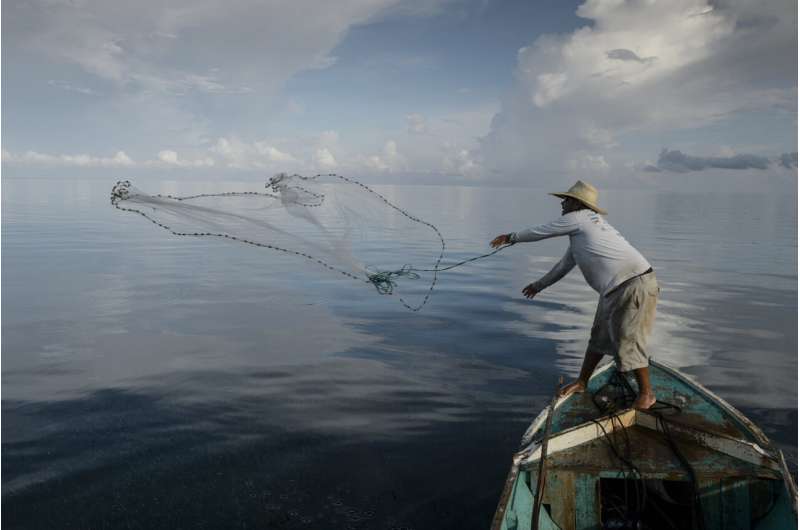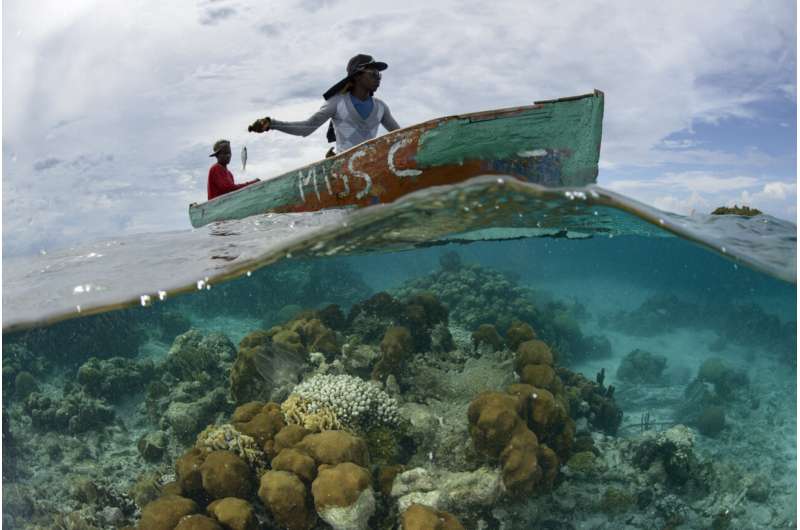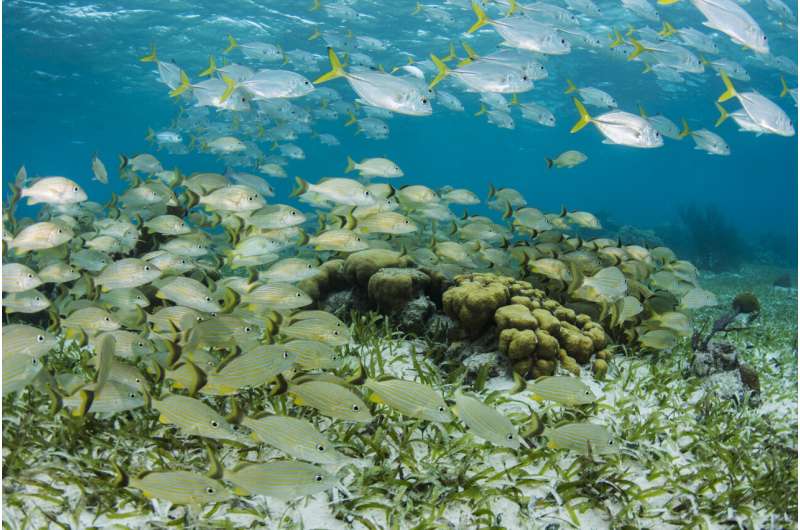This article has been reviewed according to Science X's editorial process and policies. Editors have highlighted the following attributes while ensuring the content's credibility:
fact-checked
peer-reviewed publication
trusted source
proofread
Study shows marine protected areas improve health, wealth of nearby communities

Protecting the ocean and providing livelihoods and food security do not have to be mutually exclusive. A new study, led by the Smithsonian Environmental Research Center (SERC), shows that limiting human activity in parts of the ocean can enhance the health of marine environments and the well-being of nearby coastal communities, highlighting the potential value of these marine protected areas (MPAs) in achieving multiple sustainable development goals around the world.
In December 2022, nearly 200 nations agreed to protect at least 30% of the planet's terrestrial and marine ecosystems by 2030—the famous "30 by 30" pledge—as part of the United Nations Biodiversity Conference. Newly established MPAs are critical to meeting those goals. However, little research has been conducted to find out whether MPAs affect progress toward achieving the United Nations' Sustainable Development Goals, especially those related to marine ecosystems, food security and alleviating poverty.
For the new study, SERC researchers examined the impacts of MPAs in the Mesoamerican Reef region. They not only discovered that MPAs with the most stringent fishing restrictions helped sustain fisheries, but they also found a link between marine protections and elevated income and food security in nearby coastal communities.
"Our study provides evidence that MPAs in the Mesoamerican Reef region have the potential to benefit both people and nature at the same time," said Justin Nowakowski, SERC senior scientist and lead author of the study, published in Nature Sustainability.
"Marine protected areas are hailed as a way to protect fisheries and ecosystems and promote well-being in coastal communities simultaneously," said Steve Canty, co-author and coordinator of the Marine Conservation Lab at SERC. "This is one of the first attempts to evaluate these benefits together. Our data critically shows that well-enforced, no-take zones help rebuild fish populations and that these zones are associated with higher well-being in nearby coastal communities."

To reach these findings, the authors relied on a mix of data from ecological and social organizations. They repurposed the Healthy Reefs Initiative's data from monitoring reef fish. They used social datasets from the U.S. Agency for International Development to assess factors like income, food security and the likelihood of "stunting" in young children due to chronic malnutrition.
SERC scientists calculated the presence of fish in terms of biomass, or the total mass of the fish population in a given area. MPAs with the highest protections had on average 27% more fish biomass than open-access zones with no restrictions whatsoever. Commercially valuable fish like grouper were even more abundant, with 35% more biomass.
In terms of social benefits, young children that lived near an MPA were roughly half as likely to suffer stunted growth, a key indicator of food insecurity. And the average wealth index, a measure of relative household income, was 33% higher in communities near the best-protected MPAs.
"MPAs unquestionably help improve the health of reefs and fisheries and, in some cases, may positively impact the well-being of coastal communities," said Sara E. Bonilla-Anariba, a Penn State University researcher and one of the paper's authors. "However, there is an ongoing debate about the factors influencing their positive outcomes."
For example, this study was not able to discern which groups benefited most from the MPAs—whether it was primarily fishing households or those who derived income from other industries, like tourism. The power of community-led MPAs is also worth further study, the authors said.

"There is still a lot that we don't know about the interaction between marine protected areas, fisheries and human well-being," said Nathan Bennett, Global Oceans lead scientist for the World Wildlife Fund. "How do marine protected areas affect other aspects of human well-being? What factors increase positive outcomes? How effective are coastal, community-led marine protected areas?"
There is also the potentially outsized role of location.
"Locations of MPAs are often biased toward areas with lower human pressure," said co-author Sebastien Costedoat, senior social science research manager at Conservation International. To account for this, the team statistically matched sites both near and far from the MPAs based on their site characteristics, to get a better estimate of the true impacts of MPAs.
"The goals of sustainably managing marine resources, increasing food security and reducing poverty in local communities do not always lead to tradeoffs—these positive outcomes can occur in the same places," Nowakowski said. "Under the right conditions, conservation interventions like MPAs may be central strategies for achieving multiple Sustainable Development Goals."
More information: Justin Nowakowski et al, Co-benefits of marine protected areas for nature and people, Nature Sustainability (2023). DOI: 10.1038/s41893-023-01150-4
Journal information: Nature Sustainability
Provided by Smithsonian




















